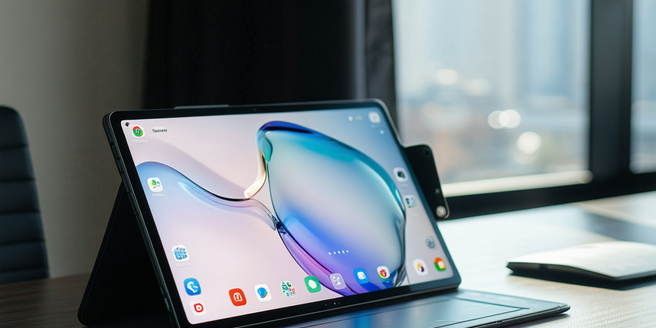Android Tablets: Samsung Vs Lenovo

Design and Build Quality Comparison
When it comes to design and build quality, both Samsung and Lenovo offer compelling options. Samsung tablets generally feature sleek, modern designs with metal and glass accents that feel premium. Their build quality is robust, with attention to detail in elements such as button placement and screen bezel reduction. Lenovo, on the other hand, opts for a more utilitarian approach but doesn’t skimp on quality materials. Their designs tend to focus on practicality with durable plastic and aluminum casing that withstands everyday wear and tear. Lenovo also emphasizes ergonomic designs for comfortable handling during prolonged use. While Samsung might have an edge in aesthetics with their more eye-catching designs, Lenovo provides excellent durability, making both brands appealing depending on individual preferences between style and ruggedness.
Display Features and Performance
Samsung tablets are often praised for their vibrant Super AMOLED displays that deliver stunning color accuracy and deep contrasts, perfect for media consumption. Their high resolution screens make images and text appear crisp, enhancing the user experience across various applications. Lenovo tablets, while not as bright, still offer respectable IPS displays with good color reproduction and wide viewing angles. Performance-wise, Samsung’s flagship models tend to feature higher refresh rates, offering smoother scrolling and better gaming experiences compared to Lenovo’s standard 60Hz screens. However, Lenovo’s focus on providing well-balanced displays ensures that users get decent performance without excessive battery drain. Both brands cater to different user needs: Samsung for those prioritizing top-tier visuals and Lenovo for users who prefer energy efficiency without sacrificing essential display quality.
Battery Life and Charging Capabilities
Samsung prioritizes longer battery life in their tablet designs, capitalizing on energy-efficient processors and software optimizations to extend usage time. Their tablets often boast fast charging capabilities, which can recharge a device rapidly, minimizing downtime. Conversely, Lenovo tablets focus on long-lasting battery experiences with larger-capacity batteries that support the needs of power users who rely on their device for extended periods. Lenovo’s Smart Charge technology reduces battery degradation over time, improving long-term battery health. Some Lenovo models even offer USB-C charging, which increases compatibility with a wider range of accessories. While Samsung tends to innovate with wireless charging capabilities in select high-end models, Lenovo’s traditional focus on maximizing battery lifespan makes it an attractive option for budget-conscious buyers.
Software and User Experience Differences
Samsung tablets run on Android with the company’s own One UI, a user-friendly overlay that enhances multitasking capabilities with features like split-screen and pop-up view. One UI also offers customization options, allowing users to personalize their device interface. Lenovo tablets also operate on Android but use a more stock version, appealing to those who prefer simplicity and less bloatware. However, Lenovo does include some proprietary apps aimed at productivity enhancement. The software experience on Samsung devices might come with additional features and regular updates, but can be heavier on system resources. Lenovo’s clean approach provides a lighter, more straightforward user experience, potentially improving performance on less powerful devices. Both brands provide a solid user experience, with Samsung focusing on robust features and Lenovo on efficient simplicity.
Price and Value for Money Analysis
In terms of pricing, Samsung tablets often fall into the premium category, backed by their high-quality displays, cameras, and additional features that justify the cost for those seeking an enriched experience. Lenovo, however, offers competitive pricing while still delivering reliable performance and quality. Their tablets are known for being budget-friendly, providing solid value for money particularly if cutting-edge features are not a priority. Lenovo’s tablets are a wise choice for users who need basic functionality at an affordable price without any extra frills. Samsung’s upscale models deliver excellent performance at a higher price point, but Lenovo’s offerings ensure consumers can enjoy capable tablets even on a tight budget. Both brands hold value in their respective markets by addressing the needs of diverse demographics, from students to professionals.